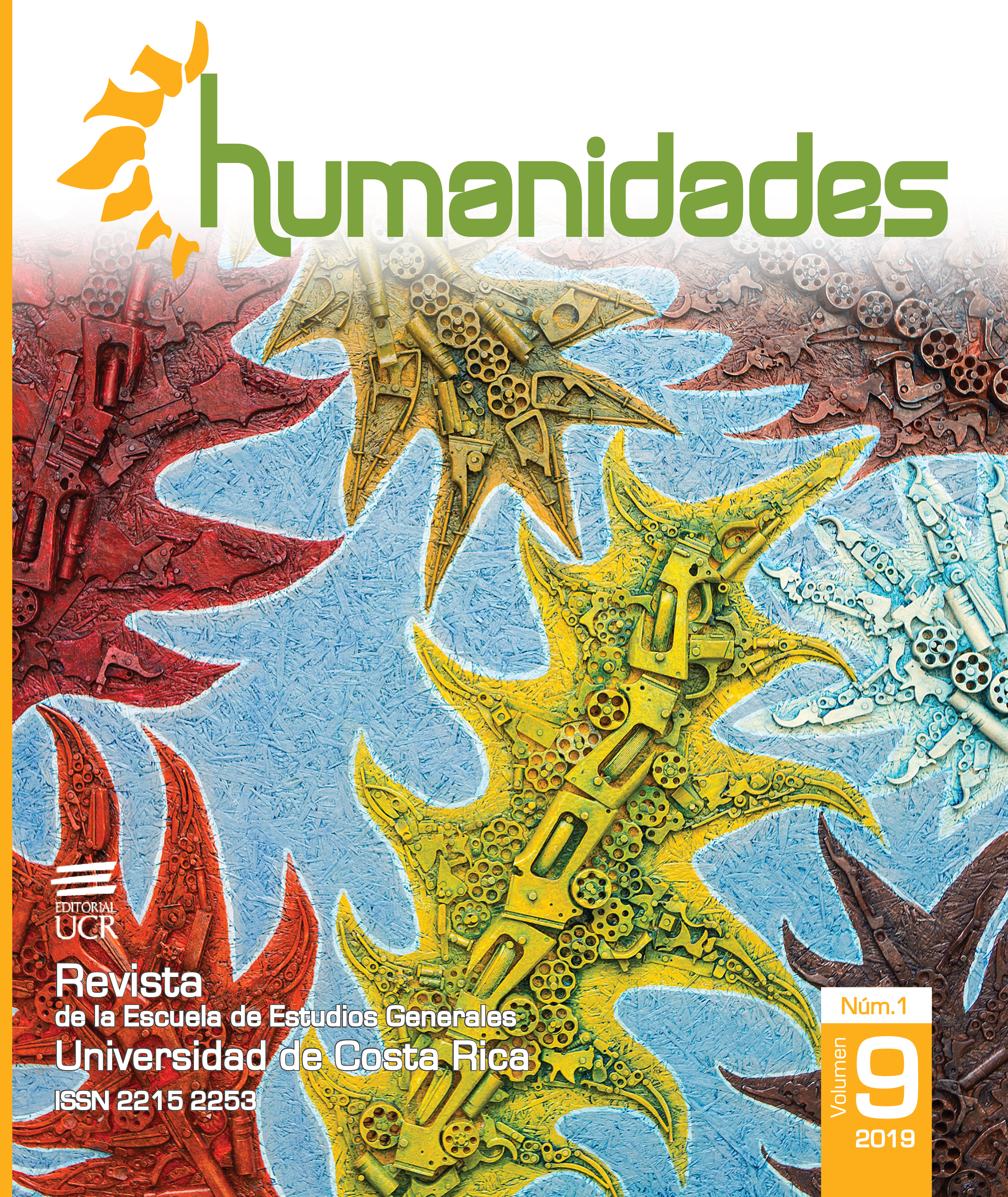Resumen
En esta revisión teórica se traza la trayectoria del léxico metalingüístico en el pensamiento contemporáneo desde los orígenes de la noción de metalenguaje y la asociación de la función metalingüística con el empleo cotidiano del lenguaje hasta la irrupción de términos como metatexto o metadiscurso, que apuntan a cierto enmarcado transtextual y pragmático de la enunciación. Mediante un relato de las problemáticas teóricas en que fue surgiendo el vocabulario metalingüístico, se pone de manifiesto la inevitable dispersión del vocabulario metalingüístico en la teorización contemporánea del lenguaje.
Citas
Agustín de Hipona. (2003). El maestro o Sobre el lenguaje. Madrid: Trotta.
Bateson, G. (1991). Una teoría del juego y de la fantasía. En Pasos hacia una ecología de la mente (pp. 205-221). Buenos Aires: Planeta-Carlos Lohlé.
Bochenski, I. M. (1985). Historia de la lógica formal. Madrid: Gredos.
Coseriu, E. (1981). Principios de semántica estructural (Segunda edición). Madrid: Gredos.
Fairclough, N. (1993). Discourse and social change. Cambridge: Polity Press.
Genette, G. (1989). Palimpsestos. Madrid: Taurus.
Halliday, M. A. K., y Matthiessen, C. M. I. M. (1999). Construing experience through meaning. A language-based approach to cognition. New York: Continuum.
Hjelmslev, L. (1971). Prolegómenos a una teoría del lenguaje. Madrid: Gredos.Hyland, K. (2005). Metadiscourse. Exploring interaction in writing. London: Continuum.
Jakobson, R. (1988). El metalenguaje como problema lingüístico. En El marco del lenguaje (pp. 81-91). México, D. F.: Fondo de Cultura Económica.
Lucy, J. A. (1993). Reflexive language and the human disciplines. En J. A. Lucy (Ed.), Reflexive language. Reported speech and metapragmatics (pp. 9-32). Cambridge: Cambridge University Press.
Lyons, J. (1997). Semántica lingüística. Barcelona: Paidós.
Silverstein, M. (1993). Metapragmatic discourse and metapragmatic function. En J. A. Lucy (Ed.), Reflexive language. Reported speech and metapragmatics (pp. 33-58). Cambridge: Cambridge University Press.
Sperber, D. (1999). Metarepresentation. En R. A. Wilson y F. C. Keil (Eds.), The MIT encyclopaedia of cognitive sciences (pp. 541-542). Cambridge: The MIT Press.
Sperber, D. (Ed.). (2000). Metarepresentations. Oxford: Oxford University Press.
Sperber, D., y Wilson, D. (2002). Pragmatics, modularity and mind-reading. Mind and Language, 17(1-2), 3-23.
Stubbs, M. (1987). Análisis del discurso. Análisis sociolingüístico del lenguaje natural. Madrid: Alianza Editorial.
Tarski, A. (2005). La concepción semántica de la verdad y los fundamentos de la semántica. En L. M. Valdés Villanueva (Ed.), La búsqueda del significado. Lecturas de filosofía del lenguaje (Cuarta edición, pp. 299- 335). Madrid: Tecnos.
Unamuno, M. (2007). Obras completas, VIII. Ensayos. Madrid: Fundación José Antonio de Castro.
Van Leeuwen, T. (2004). Metalanguage in social life. En A. Jaworski, N. Coupland y D. Galasinski (Eds.), Metalanguage: Social and ideological perspectives (pp. 107-130). New York: Mouton De Gruyter.
Vande Kopple, W. J. (2012). The importance of studying metadiscourse. Applied Research in English, 1(2), 37-44.
Weinrich, H. (1981). De la cotidianidad del metalenguaje. En Lenguaje en textos (pp. 110-139). Madrid: Gredos.
Wierzbicka, A. (2005). Empirical universals of language as a basis for the study of other human universals and as a tool for exploring cross-cultural differences. Ethos, 33(2), 256-291.
Wilson, D. (2000). Metarepresentation in linguistic communication. En D. Sperber (Ed.), Metarepresentations (pp. 411-448). Oxford: Oxford University Press.


